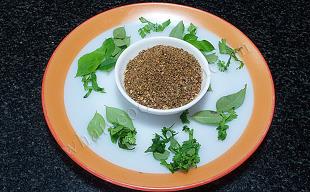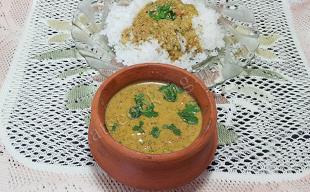Whats Cooking
inspiring to cook n bakeSee Also

For most of Tamilians, rasam is comfort food. This tangy and spicy dish is supposed to get rid of colds. Some drink it plain as a soup, some have it w....
Feedback
DISH NAME : THENGAI PAAL RASAM
Description
For most of Tamilians, rasam is comfort food. This tangy and spicy dish is supposed to get rid of colds. Some drink it plain as a soup, some have it with rice and it is also drunk as a palate cleanser in between a meal. Rasam can be made with or without pigeon pea (tur dal). Though rasam powder is available commercially, nothing to beat the home made version. There are numerous types of rasam like tomato rasam, pineapple rasam, pepper rasam etc.
Ghee is Hindi word. In English ghee is known as clarified butter. Ghee is the clear golden liquid obtained after melting butter. Ghee is applied over Indian breads like chapathi, naan etc., cooked rice, curries, sweets, etc., to impart a tempting aroma. In fact, the name ‘ghee’ is derived from a Sanskrit word that means ‘sprinkled’. Ayurveda recommends the usage of ghee in moderation.
Mustard seeds are the small round seeds of various mustard plants. The seeds are usually about 1 or 2 mm in diameter. Mustard seeds may be colored from yellowish white to black. The seeds can be black,brown and yellow mustard. In indian cooking mustard is used mainly for tempering.
Coconut milk is derived from the creaming/ grinding or pressing of the flesh of the brown coconut and not the tender green ones. After grating the coconut coconut meat is squeezed to release fresh, thick first extract coconut milk. After this add a little bit of hot water and repeat the step of squeezing the milk out. 3 rounds of this should provide you with coconut milk of varying thickness.
Choose coriander leaves that have firm, unwilted leaves, & deep green in color with no signs of yellowing or browning. Leaves that are smaller in size will be more tender and have a milder flavour. As heat diminishes their flavor quickly, coriander leaves are often used raw or added to the dish right before serving. The fresh leaves are an ingredient in many South Asian foods (particularly chutneys), in Chinese dishes and in Mexican salsas and guacamole. In Indian recipes, coriander leaves are used in large amounts in gravies and as green curry paste.
Note
1) This recipe uses thin coconut milk, if you generally prefer a thick mixture, adjust the thickness of coconut milk accordingly.
2) Do not let coconut milk split or curdle, stir continuosly.
| Quantity | Name |
|---|---|
| 2 Tbsp. | Ghee/oil |
| 2 Tsp. | Mustard seeds |
| 1 Cup | Tomatoes, chopped |
| 2 Cups | Coconut milk, thin |
| Salt to taste | |
| 3 Tsp. | Rasam powder |
| 0.25 Tsp. | Turmeric powder |
| 3 Tbsp. | Corriander leaves chopped fine |
Method
1) Heat ghee. Splutter mustard seeds.
2) Add turmeric powder and rasam powder, fry lightly.
3) Add tomatoes and fry till tomatoes turn pulpy.
4) Add coconut milk, stirring continuously ensuring it does not split or curdle.
5) Add salt to taste.
6) Remove from fire. Garnish with corriander leaves.
Serving Suggestions
Serve with rice.
